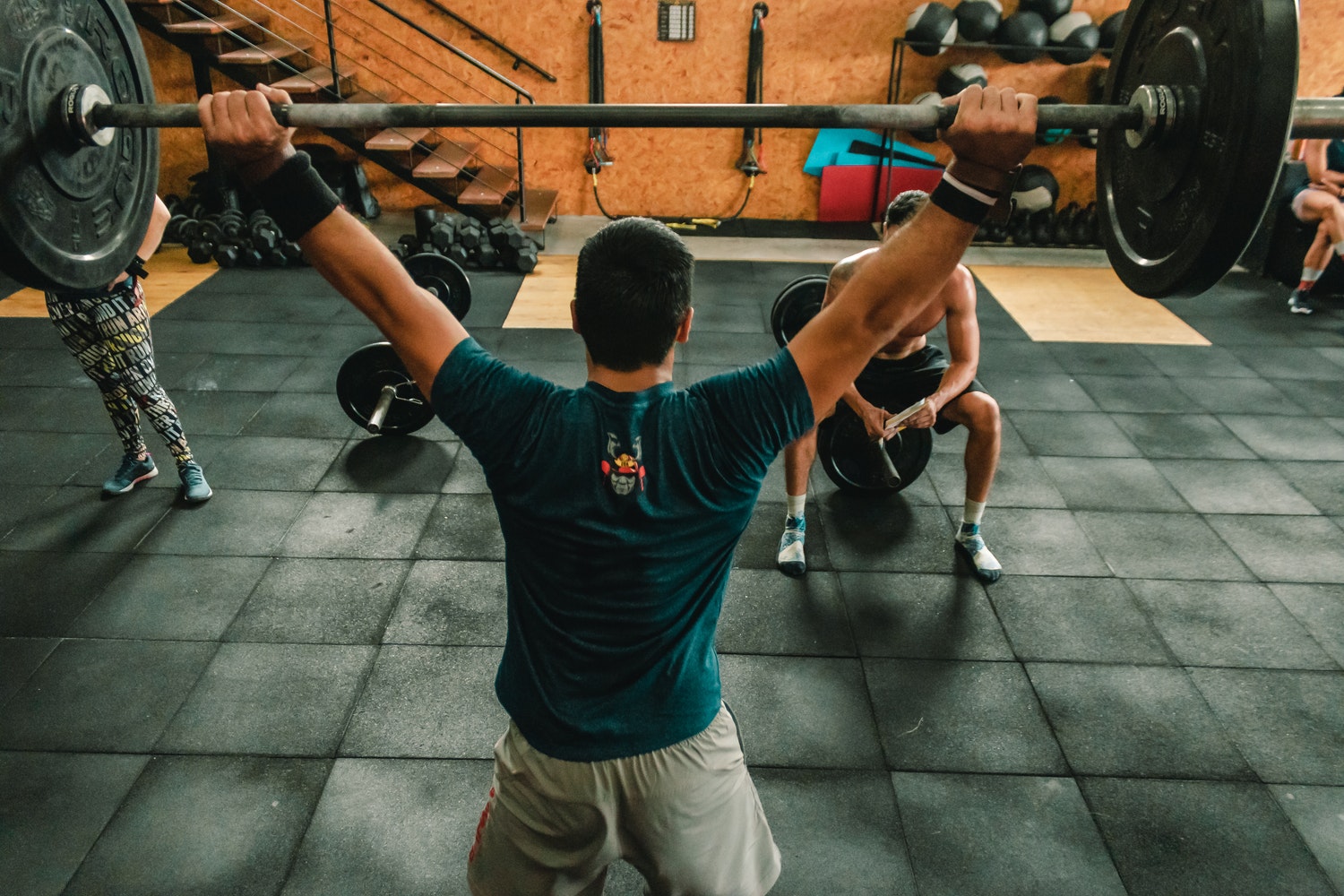There are various ways to structure a workout routine, each with its unique benefits and drawbacks. There is no definitive answer as to whether a full-body or split workout is better; however, one might be better for you.
When it comes to structuring a fitness plan and deciding between a full body and split workout, you must consider your goals, fitness level, and time commitment. This guide will detail the pros and cons of full-body and split workouts and break down which might be right for you.
What Is a Full Body Workout?
As the name suggests, a full-body workout entails a regiment that targets each of your body’s main muscle groups. A good full-body workout will hit your upper body, core, and lower body, while also elevating your heart rate.
You can get a full-body workout outside of the gym, too. A full body regiment can be effective using only bodyweight exercises, such as push-ups, pull-ups, and squats. The flexibility that full-body workouts allow makes them beneficial for people of all fitness levels. A full-body workout can be tailored to your needs and skill level, no matter what condition you’re in.
Benefits of a Full Body Workout
Full-body workouts come with a plethora of benefits that might make it the right choice for you:
Lower Time Commitment
Getting to the gym upwards of three times per week may be unrealistic for your schedule. You can work out just two or three times per week without missing muscle groups with a full-body workout.
If you miss a day and can only get to the gym once in a given week, you will still work out each muscle group that week. As a split routine does not allow for that kind of flexibility, full-body workouts are best for those with busy schedules.
Increased Muscle Recovery Rates
Recovery is crucial to maximizing the results you get from your workout routine. A lack of recovery may be the reason you do not see results. Because of its lower time commitment, a full-body workout allows for more recovery days and potentially increased results.
Reduced Risk of Injury
A full-body workout can prevent muscle imbalances and overuse injuries. Targeting multiple muscle groups in a workout will decrease the possibility of putting a disproportionate amount of stress onto one muscle or joint.
Strengthening each muscle group can protect against common injuries like stress fractures, tendon or ligament tears, and back pain.
Also, due to the flexibility of a full-body workout routine, you can decide to skip a day if your body is too sore or at risk for injury. This flexibility allows you to listen to your body and make the necessary adjustments to avoid overtraining.
Ideal For Fat Loss
Full-body workouts that combine cardio with strength training have been shown to increase fat loss, burn more calories, and reduce heart health risk factors. While cardio alone can provide these benefits, combining cardio with resistance training can increase these benefits. Building lean muscle mass throughout the body can have a positive effect on your metabolism. Therefore, you will burn more calories throughout the day, rather than just during exercise.
The Ski-Row Air or the Ski-Row Air + PWR machines provide both cardio and resistance training, making them an excellent choice for a full-body workout that burns fat and builds lean muscle mass.
The Drawback of a Full Body Workout
While full-body workouts have many benefits, they can be limiting for some people. Because full-body workouts do not focus on a single muscle group, they may not provide the volume and intensity needed to maximize potential muscle mass gains. If your goal is to optimize your potential for mass, a split workout might be right for you.
What Is a Split Workout?
A split workout divides a workout routine by muscle groups or specific muscle movements. As each workout focuses on a specific muscle group or movement, it allows for greater intensity and volume to be put onto each muscle group. Therefore, more potential for muscle growth is created. The three most common splits include:
- The Push/Pull/Legs split divides your workout routine into three categories. On your push day, you will work your “push” muscles such as chest, shoulders, and triceps. Your “pull” muscles include your back and biceps. Finally, your “leg” workout includes the entire lower body––hamstrings, quads, calves, and abdominals.
- The Upper/Lower split divides your workout into two categories. Your upper body days will include chest, back, shoulders, and arms. Lower body days target hamstrings, quads, calves, and abdominals. This split is best for beginners as it is the most general and allows for greater variety.
- The Four Day Split will focus on only one or two muscle groups each day. For example, one day might include chest and triceps, while your next day might only include biceps. This split increases the volume and intensity of each muscle group and can increase muscle mass gains. This is the most time-consuming and physically stressful split and is, therefore, best for experienced athletes.
Benefits of a Split Workout
Your split workout will allow for greater volume and intensity than a full-body workout, no matter how it is structured. By focusing on individual muscle groups and movements, you will increase your potential for muscle mass gains. Therefore, a split workout is best if your goal is to increase muscle mass rather than lose fat.
Depending on how your routine is structured, a split workout may also allow more muscle recovery time. While it ultimately requires more time in the gym, there will be a greater gap between a specific muscle group’s next workout. This further benefits the muscle-building process, as there is ample recovery time after an intense, voluminous workout.
The Drawbacks of a Split Workouts
Split workouts may not be suited for beginners. If you are new to working out, it is recommended that you start with a full-body routine. This will allow you to learn proper techniques while building your overall strength and fitness. The volume and intensity inflicted on individual muscle groups by split workouts are great for building muscle; however, they can also increase the risk of injury. If you do not have a baseline strength and fitness level, you may want to avoid a split workout routine.
If you have a busy schedule, split workouts may not be right for you. Missing a workout in your split routine means missing an entire muscle group. Allowing too long between workouts of a muscle group can impair results. A full-body workout allows for greater flexibility.
Lastly, a split workout does not provide the cardiovascular benefits of a full-body workout. If your goal is to lose weight, a full-body workout may be your best option.
Wrapping it All Up
Full body and split workouts each come with unique benefits. When deciding between them, you must consider your goals, schedule, and fitness level.
If your goal is to lose weight, build lean muscle mass, or increase your overall physical condition, a full-body workout might be the best choice for you. With a full-body workout, you will enjoy the benefits of both resistance and cardiovascular training. Furthermore, a full-body workout might be the right choice if you have a busy schedule. Not only does it require less time in the gym, but it is also more forgiving of missed workouts.
While full-body workouts have a wide range of benefits, a split workout regimen may be the best choice if your goal is to increase mass. Because a split workout allows for increased intensity, volume, and recovery time for each muscle group, it is more conducive to building muscle mass.
No matter what you choose, always be sure to work out safely and allow ample recovery time. Overtraining can not only lead to injury but also diminished results.
Sources:
Burn More Calories and Build More Muscle With Full-Body Workouts | Livestrong
Exploring the Science of Recovery | NASM
Overuse injury: How to prevent training injuries | Mayo Clinic
Total-body Workout for Beginners | ACE Fitness
Pros and Cons of Split System Training Routines | Verywell Fit





Leave a comment
All comments are moderated before being published.
This site is protected by hCaptcha and the hCaptcha Privacy Policy and Terms of Service apply.